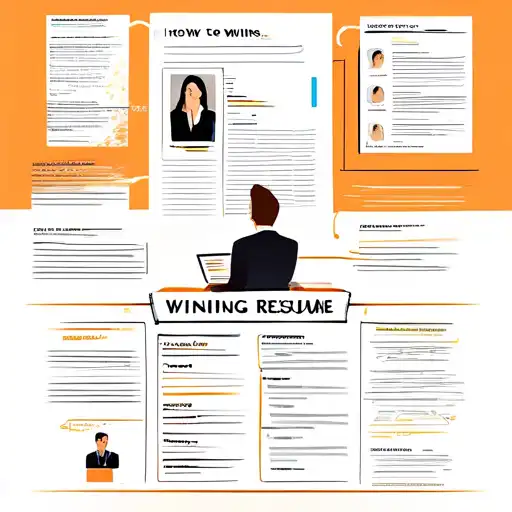Introduction
In today's competitive job market, having a winning resume is more important than ever. It's your first opportunity to make a great impression on potential employers. This guide will walk you through the steps to create a resume that stands out from the crowd, highlighting your skills, experience, and achievements in the best possible light.
Understanding the Basics
Before diving into the details, it's crucial to understand what makes a resume effective. A well-crafted resume should be concise, tailored to the job you're applying for, and free of errors. It should also be formatted in a way that makes it easy for hiring managers to scan quickly.
Key Components of a Resume
- Contact Information: Include your name, phone number, email, and LinkedIn profile.
- Professional Summary: A brief overview of your skills and experiences.
- Work Experience: List your previous jobs, focusing on achievements rather than duties.
- Education: Include your degrees and any relevant certifications.
- Skills: Highlight both hard and soft skills that are relevant to the job.
Tailoring Your Resume
One size does not fit all when it comes to resumes. Tailoring your resume for each job application can significantly increase your chances of getting an interview. Use keywords from the job description and focus on experiences that are most relevant to the position.
How to Use Keywords Effectively
Many companies use Applicant Tracking Systems (ATS) to screen resumes before they reach a human. Including keywords from the job description can help your resume pass through these systems. However, avoid keyword stuffing; your resume should still read naturally.
Formatting Tips
The format of your resume can be just as important as the content. Use a clean, professional layout with plenty of white space. Stick to a standard font like Arial or Times New Roman, and keep the font size between 10 and 12 points.
- Use Bullet Points: They make your resume easier to read and help highlight key information.
- Keep It Concise: Ideally, your resume should be no longer than one page, especially if you're early in your career.
- Be Consistent: Use the same formatting for similar sections throughout your resume.
Proofreading and Feedback
Before sending out your resume, make sure to proofread it carefully. Spelling or grammatical errors can make a bad impression. It's also a good idea to get feedback from a mentor or professional in your field.
Final Checks
- Check for spelling and grammar errors.
- Ensure all contact information is correct.
- Make sure the format is consistent throughout.
Conclusion
Crafting a winning resume takes time and effort, but it's worth it. By following these steps, you can create a resume that showcases your strengths and helps you stand out in the job market. Remember, your resume is a living document that should be updated regularly as you gain new skills and experiences.
For more career advice, check out our career tips section.
